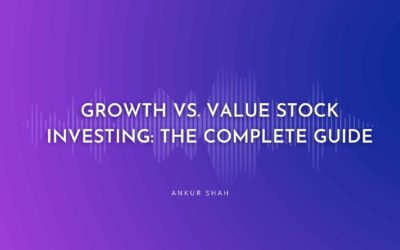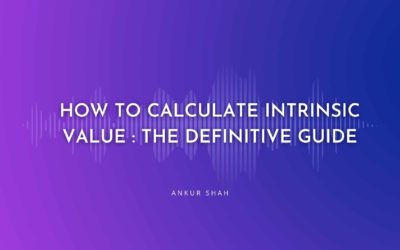How to Use Open Interest for Intraday Trading?
Open interest is a critical metric for intraday traders to incorporate into their trading strategies.
It refers to the total number of outstanding derivative contracts, such as futures and options, that are open at the end of each trading session.
Understanding and analyzing changes in open interest can give intraday traders valuable insights into market sentiment and developing trends.
This allows them to make more informed decisions on entries and exits that align with market conditions.
While volume shows how many contracts were traded in a given period, it indicates how many remain open.
Rising OI signals increasing money flows into the market as new positions are opened.
Declining OI warns of waning participation as positions are closed.
Intraday traders can use OI, along with volume and price action, to confirm the strength of emerging trends.
For example, rising prices coupled with increasing OI suggest a strong uptrend.
Divergences between price and open interest may highlight exhaustion ahead of trend reversals.
Traders can also identify potential support and resistance levels by looking at concentrations of OI at certain strike prices in the options chain.
Monitoring shifts in open interest allows adjustments to be made to options strategies accordingly.
In summary, analysing OI is a vital component of intraday trading strategies.
This overview highlights the importance of OI for gauging market sentiment, confirming trends, identifying reversal signals, and informing options trading decisions.
Incorporating OI analysis can give intraday traders an added edge.
Check out – Electric Vehicle Shares in India
What is Open Interest?
Definition and Explanation
Open interest refers to the total number of outstanding derivative contracts, such as futures and options, that have been opened but not yet liquidated by an offsetting trade or exercise. It represents the open positions that exist at the end of each trading day.
The difference between OI and volume is that volume refers to the number of contracts traded in a given period, while OI shows the number of unsettled contracts.
How It’s Calculated
Open interest is calculated at the end of each trading session. It increases when new futures or options contracts are created, and decreases when existing positions are closed.
For example, if a new futures contract is established between a buyer and seller, the OI will increase by 1 contract.
If an existing open contract is closed, the outstanding contracts will decrease by 1.
The OI will remain the same if an existing open position is closed and a new one is opened.
What Causes Changes
The main factors that cause open interest to rise are:
- Increased futures trading activity as new money enters the market
- New positions being established by traders and investors
- Existing holders of contracts not closing out positions
The main factors for declining open interest are:
- Holders of open positions liquidating and closing out contracts
- Reduced futures trading activity as money leaves the market
- Traders not opening new positions and allowing existing ones to expire
By analysing the changes in OI, traders can gauge market sentiment and spot trends in participation.
Rising outstanding contracts signals increasing commitment, while falling warns of waning interest.
Understanding Open Interest Data
Where to Find the Data
This data can be found on financial websites, trading platforms, and derivatives exchanges like the CME Group.
For specific futures contracts or options, This numbers can be found on quote pages and option chain tools.
Historical and current OI data is available on charts tracking the contract over time.
Guide – Career In Stock Market
Reading and Interpreting the Data
Look at the actual outstanding contracts numbers and the changes from previous trading sessions.
Compare outstanding contracts changes to volume and price action for that trading period.
Rising OI with rising prices indicates increasing bullish sentiment. Declining with rising prices suggests potential weakness.
Spikes or dramatic drops in OI warn of inflection points ahead.
Look for concentrated open interest at certain strike prices on the options chain to spot support and resistance levels.
Common Patterns and Trends
This tends to climb steadily during strong trending moves as positions build up.
At market tops and bottoms, it will often peak and begin declining as the trend starts to reverse.
During range-bound or choppy price action, This tends to be flat and muted.
Sudden spikes in outstanding contracts following news events warn of volatility ahead as positions are established.
Drops in OI signal loss of participation in a move and potential exhaustion.
By spotting these types of open interest behaviour, traders can better time their entry and exit points.
Don’t miss out – Stock Valuation Methods
Using Open Interest Strategies for Intraday Trading
Confirming Breakouts
Check for surging OI when prices break out above resistance levels or below support. Rising OI validates the strength of the price move.
Lack of expansion on a breakout suggests a false move that is unlikely to be sustained.
Identifying Support and Resistance
Look for strike prices on the options chain with heavy concentrations of OI. These indicate likely support and resistance zones.
Changes in OI at key levels shows if they are gaining or losing strength as boundaries.
Gauging Market Sentiment
Rising open interest indicates bullish conviction if coupled with rising prices. Declining with rising prices warns of weakness.
Falling OI paired with falling prices reflects bearish sentiment and distribution underway.
Spotting Divergences
Price reaching new highs while outstanding contracts fails to expand or declines signals potential trend exhaustion.
Open interest spiking much higher than volatility suggests may indicate excessive speculation.
Incorporating with Other Indicators
Combine OI signals with volume, moving averages, RSI to confirm trend strength and potential reversals.
Use open interest analysis to provide additional context to overbought/oversold oscillators.
Rules of Thumb
Rising OI and prices indicates bullish sentiment; falling prices reflects bearishness.
High outstanding contracts at tops and low outstanding contracts at bottoms suggests reversals ahead.
Flat outstanding contracts signals consolidation or range-bound action, while spiking open interest indicates volatility.
Open Interest for Options Trading
The Importance of Open Interest for Options Traders
It holds critical insights for options traders. As it represents open positions and unsettled contracts, it provides a live snapshot of how much activity is happening in different options.
Rising OI signals increasing interest in an option at a particular strike price. That often indicates the market direction traders expect.
Declining outstanding contracts suggests waning demand and a potential reversal ahead.
Know more – How to use Stock Screener
Tracking Open Interest on Specific Options Contracts
Savvy options traders will look beyond just the raw open interest numbers and track activity on specific contracts. Is this rising in out-of-the-money call options?
That signals bullish sentiment. Is this building in puts at a key support level? That price may be an area institutions expect to hold.
Spotting where outstanding contracts and volume are increasing allows traders to identify where large players are positioning. This can tip-off where the smart money is focused.
Seeing Smart Money Positions via Open Interest
Professional traders and institutions leave footprints with their options activity. If it suddenly spikes on large-size options contracts for a particular expiry, it signals big money is making a move.
For example, a surge of OI in short-dated out-of-the-money calls likely indicates institutions opening speculative call option trades anticipating a rally.
Traders can then watch those strike prices where the activity is focused to see if the levels are tested. The actions of smart money are revealed through these changes in open interest.
Adjusting Option Strategies Based on Shifts
If open interest declines across multiple strike prices, it can signal a lack of commitment to the trend. This may prompt an options trader to take profits on long calls or close out bullish spreads.
On the other hand, a pick-up in OI on upside calls after a period of flat activity reaffirms bullish conviction. A trader might then leg into more aggressive call debit spreads on the renewed interest.
By monitoring these shifts in OI, options traders can fine-tune their strategies and time entries and exits as conditions change. Outstanding contracts provides an x-ray into changing sentiment.
In summary, tracking this is vital for gaining an edge in options trading.
It provides invaluable visibility into how large traders are positioned and when conviction may be waning or building in the trend.
Savvy options traders will continually incorporate OI analysis into their approach.
Risk Management with Open Interest
Open Interest as Part of Complete Analysis
While open interest provides helpful insights, it should not be used in isolation when making trading decisions.
Price action, volume, volatility, and chart patterns should all be incorporated for robust analysis.
Over Reliance on any single indicator can be dangerous. OI should be used to confirm analysis, not drive it entirely.
Check out – How does stock market work
Avoid Over Reliance
Traders should be wary of putting too much emphasis solely on outstanding contracts for entries and exits. No indicator is foolproof for predicting future moves.
Basing decisions purely on outstanding contracts fluctuations could lead to missed opportunities or premature exits if other factors are ignored.
OI is best blended into overall strategy.
Using Stops and Position Sizing
When it is pointing to weakening conviction, traders may consider using tighter stops to control risk.
If it surges, stops could be loosened to allow more space for the accelerating trend.
Rising OI suggests room to scale into larger position size, while falling recommends smaller positions to limit exposure.
Adjusting stops and position size based on shifting OI allows managing risk accordingly.
In summary, while it is a useful supplementary indicator, traders should avoid overreliance and continue employing robust risk management.
Stops, position sizing, risk/reward ratios, and diversity remain essential even when incorporating outstanding contracts signals. It should enhance, not replace, prudent trading practices.
Key Takeaways
- It shows current open positions in derivatives markets
- Analyzing changes in outstanding contracts reveals shifting market sentiment and participation
- Rising outstanding contracts confirms trend strength; falling open interest signals waning conviction
- Divergences between price and outstanding contracts can signal trend reversals ahead
- Options traders use this to see positioning and adjust strategies accordingly
Benefits of Open Interest Analysis
Incorporating OI analysis provides intraday traders with a deeper understanding of market dynamics.
By tracking OI patterns, traders can gain powerful insights into evolving trends and changes in participation and conviction.
It adds nuance for determining high-probability entry and exit points. It serves as an early warning sign of waning momentum ahead of reversals. Overall, analyzing it delivers an added edge.
Consistent Compounding – Screening for warren buffet stocks
Recommendations for Traders
- Use it to confirm price action and volume signals
- Avoid overreliance on any single indicator in isolation
- Combine it with chart patterns and other metrics
- Be flexible in adjusting strategies based on shifts in outstanding contracts
- Focus on high OI strike prices for support/resistance
- Manage risk with stops and position sizing as open interest changes
By blending open interest analysis into their overall approach, intraday traders can make better-informed trading decisions.
Though just one piece of the puzzle, understanding OI provides valuable context that active traders can utilize to their advantage.




